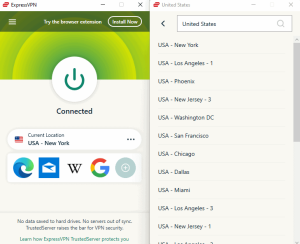
WASHINGTON, December 21, 2023 – The National Telecommunications and Information Administration’s spectrum advisory committee on Tuesday unanimously approved a report endorsing the Citizens Broadband Radio Service.
The agency’s Commerce Spectrum Management Advisory Committee was tasked in December 2022 with assessing the CBRS spectrum sharing framework and determining how it might inform future spectrum management efforts by the NTIA, which is tasked with overseeing federal spectrum use, and other government agencies.
CBRS has since 2020 governed spectrum sharing for 150 megahertz in the 3.5 GigaHertz (GHz) band. The Federal Communications Commission framework allocates spectrum to three tiers of users: military radar systems and other federal users, fixed wireless and mobile providers who purchase priority licenses in certain bands, and general access users who use the remaining spectrum opportunistically. Each is protected from interference by the lower tiers.

CSMAC said in its report that the industry, government, and academic stakeholders the group consulted “unanimously felt that the hybrid CBRS framework has resulted in commercial use without harmful interference” to vital federal systems.
The group recommended a process for accepting complaints and implementing improvements. The framework is new, the report notes, and “no defined process currently exists, and any suggested improvements are slow to address and implement.”
Expediting the spectrum sharing process
A working policy group composed of NTIA and FCC officials, as well as senior members of organizations in all three access tiers, would help expedite the improvement process, the CSMAC report said. That group would have to be tailored to fit the circumstances of any future frequency bands in which CBRS is implemented.
That’s something the group said had broad support among the stakeholders it consulted, with many noting the framework “provides a strong foundation” for sharing in other bands. Respondents tapped specific bands as strong candidates for a CBRS-like system, with the lower 3 GHz band being the most common suggestion.

A Defense Department study recently found no current openings for commercial users in the band, but the NTIA is studying possibilities for future sharing arrangements.
Some commercial users expressed hesitation about expanding CBRS, the report notes. Nationwide wireless providers and a trade group told CSMAC that the potential for interference in CBRS bands makes the traditional static license system a better option for future spectrum allocation.
Users also suggested improvements to reduce disruption by federal systems. They told the group current methods of safeguarding government users are too conservative and sometime kick off commercial systems unnecessarily.
CSMAC’s findings will likely inform the NTIA’s National Spectrum Strategy, a plan put together at the request of the White House to standardize the nation’s spectrum pipeline and study approximately 2,800 MHz of spectrum for potential repurposing to expand federal and commercial use.
The FCC will need its spectrum auction authority reinstated to accomplish that goal. A stopgap measure was signed into law on Tuesday that allows the agency to issue previously purchased licenses that have been in limbo since the authority expired for the first time in March.
Correction: An earlier version of this article stated the National Spectrum Strategy called for freeing up 2,800 MHz for commercial use. The plan calls for the study of that spectrum to inform potential repurposing efforts.



